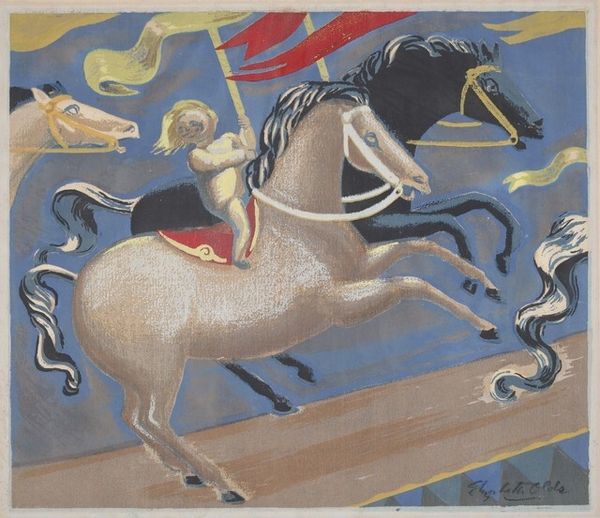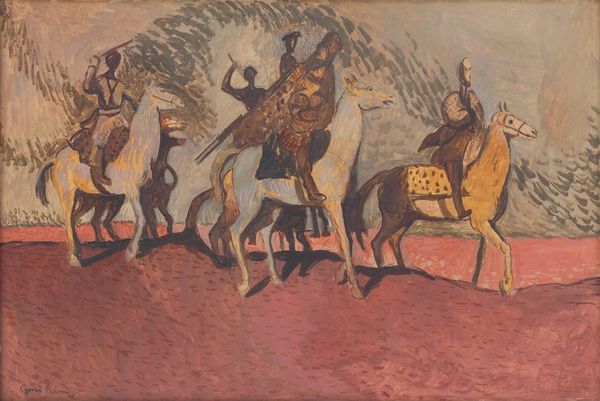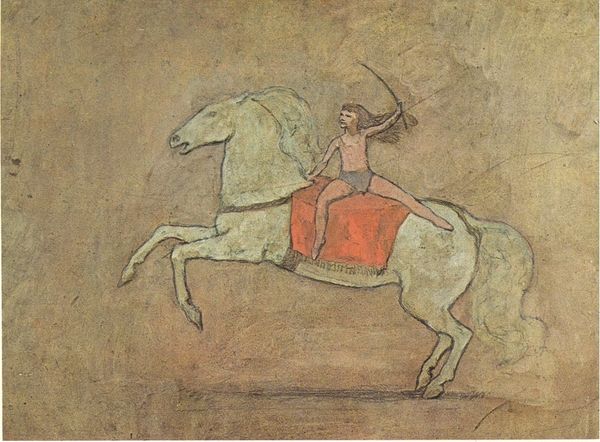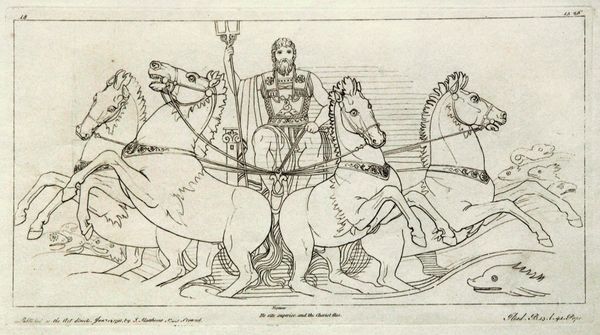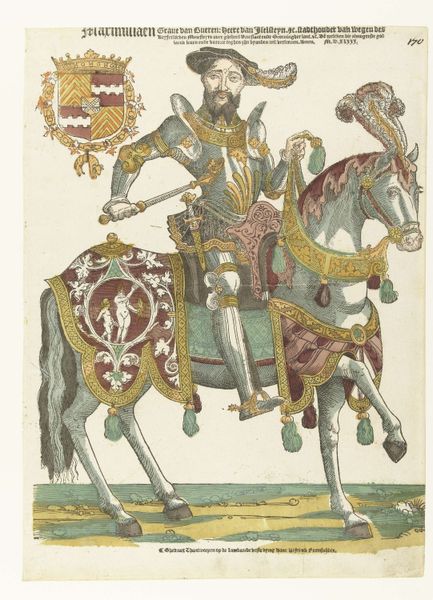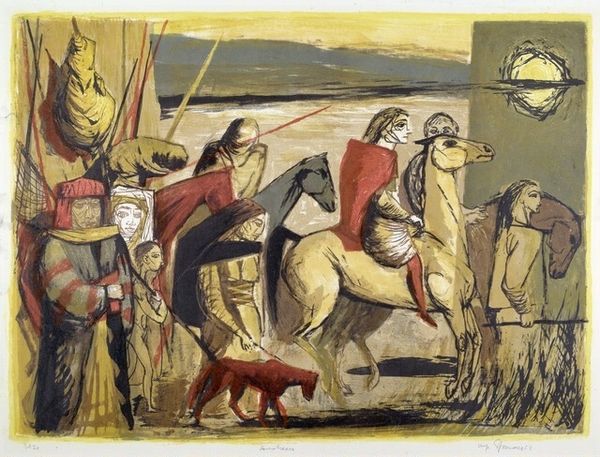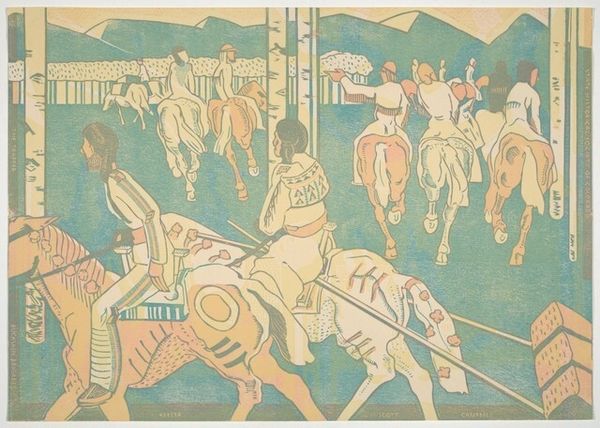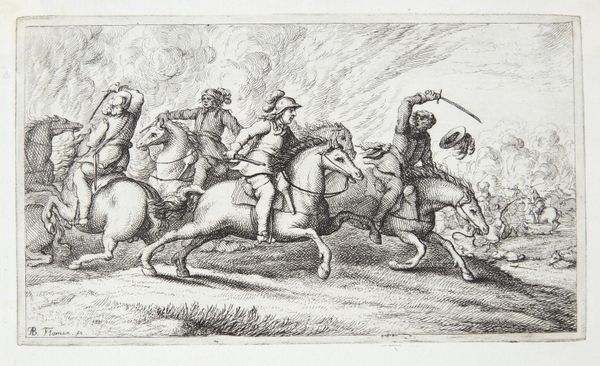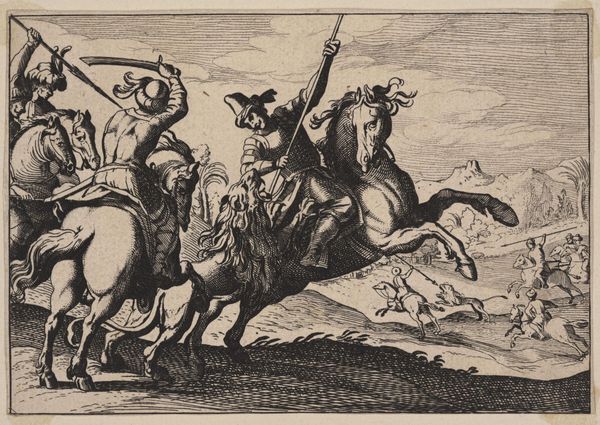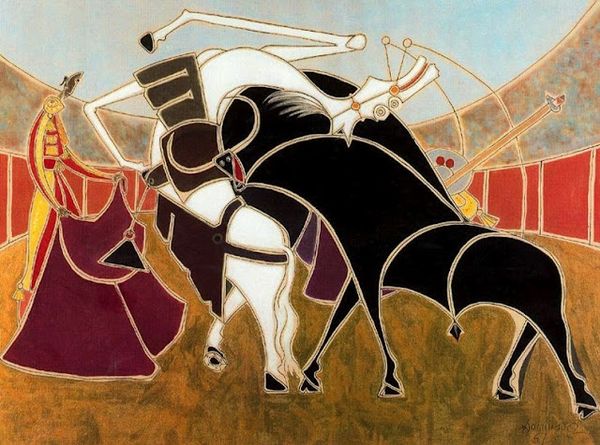
print, woodcut
# print
#
landscape
#
figuration
#
coloured pencil
#
geometric
#
woodcut
Dimensions: image: 26.67 × 38.42 cm (10 1/2 × 15 1/8 in.) sheet: 29.85 × 41.91 cm (11 3/4 × 16 1/2 in.)
Copyright: National Gallery of Art: CC0 1.0
Editor: So this print, "The Frolic," by Anders Aldrin, is dated around 1934. The medium is a woodcut, I believe. It's certainly a dynamic piece; the composition almost vibrates with energy! What’s your initial reaction to it? Curator: The most striking thing for me is how the stylization impacts our reading of leisure and labour in the 1930s. This woodcut, with its bold, flattened forms, sits interestingly between folk art traditions and modernist aesthetics. It reminds us that representations of work and play weren't separate from broader social anxieties during the Depression. The title suggests carefree joy, but do the simplified figures and almost frantic energy hint at something more complicated? Editor: Complicated how? Do you think it critiques the leisure activities of the elite, perhaps? Curator: It’s possible. I think we should consider what 'frolic' means in this context. The depicted scene could be interpreted as a celebration, or even a frantic escape. It seems pertinent to examine the history of equestrian activities in Sweden and the symbolic connotations associated with horses and their riders. Did it only include privileged social classes, or not? What do you think of its simplification? Is there anything specific that it brings to mind? Editor: The simplification is quite interesting in contrast to its almost unsettling feeling. The figures seem more like types than individuals, and that anonymity, for me, underscores that potential critique you’re hinting at. Almost a political undertone. Curator: Exactly. The facelessness does erase individuality. The woodcut's bold lines and color choices, do they resonate with other prints of that period focusing on social commentary? Consider the influence of printmaking as a more democratic medium... Editor: Good point. I'm looking at it in a new light, considering it as more than just a fun scene. Thanks for pointing out how context truly shapes how we interpret even what seems at first glance as a lighthearted theme. Curator: And I hadn’t thought about how anonymity played into possible sociopolitical commentary before you brought it up. Thank you.
Comments
No comments
Be the first to comment and join the conversation on the ultimate creative platform.

